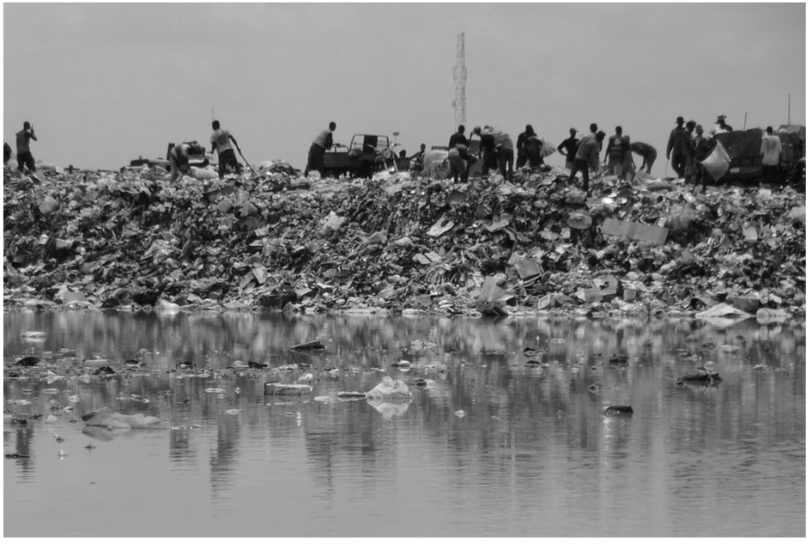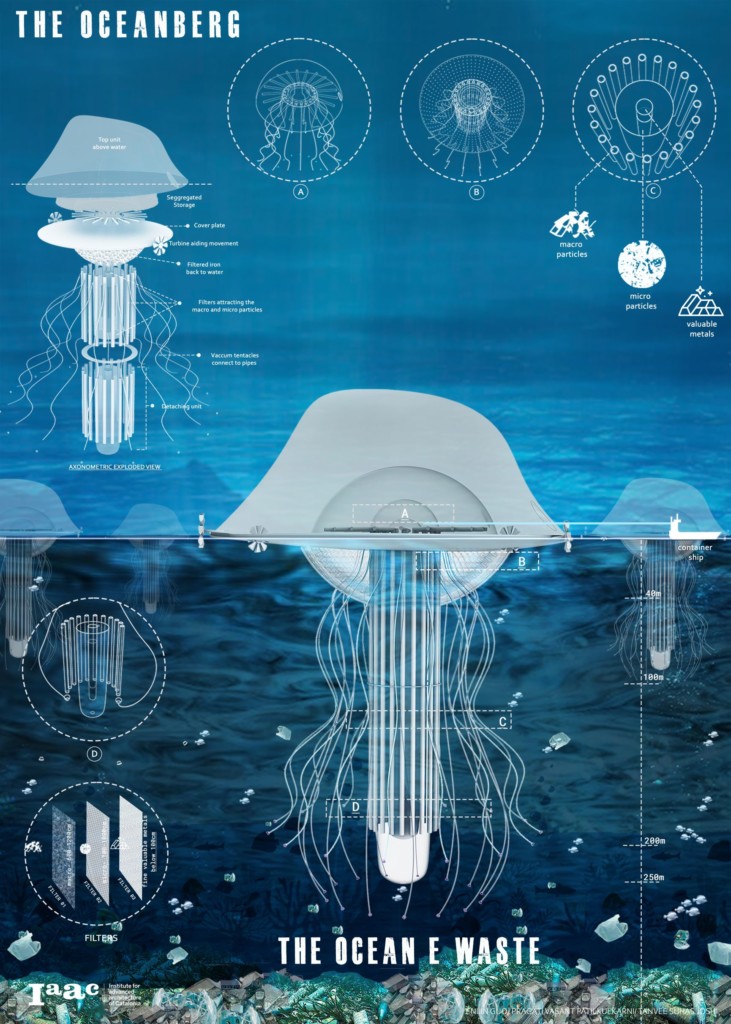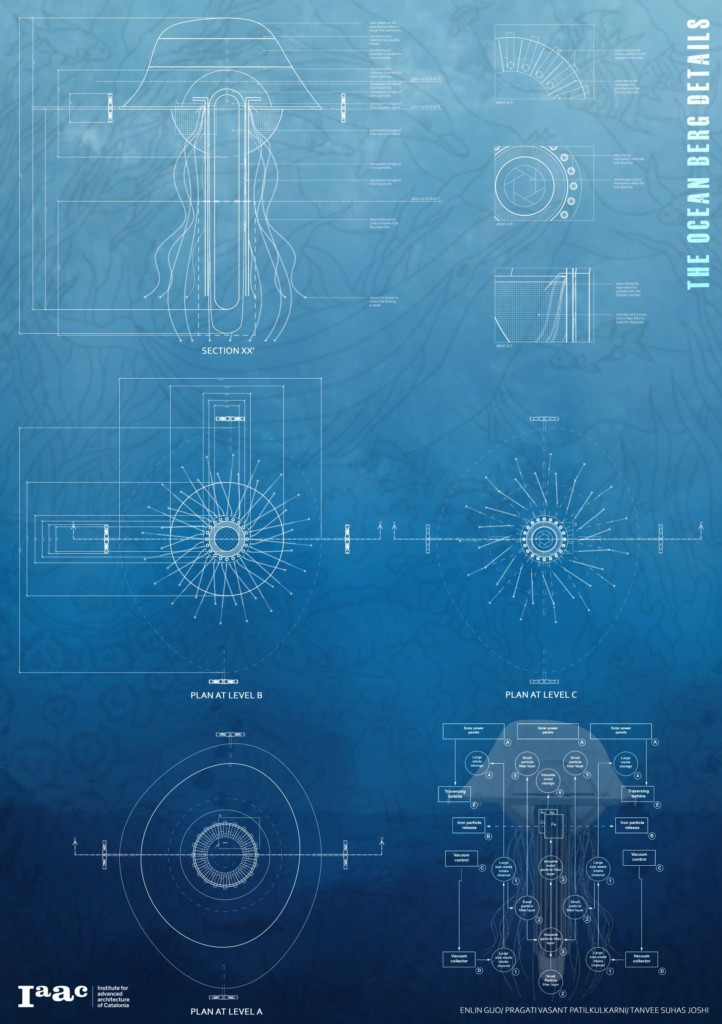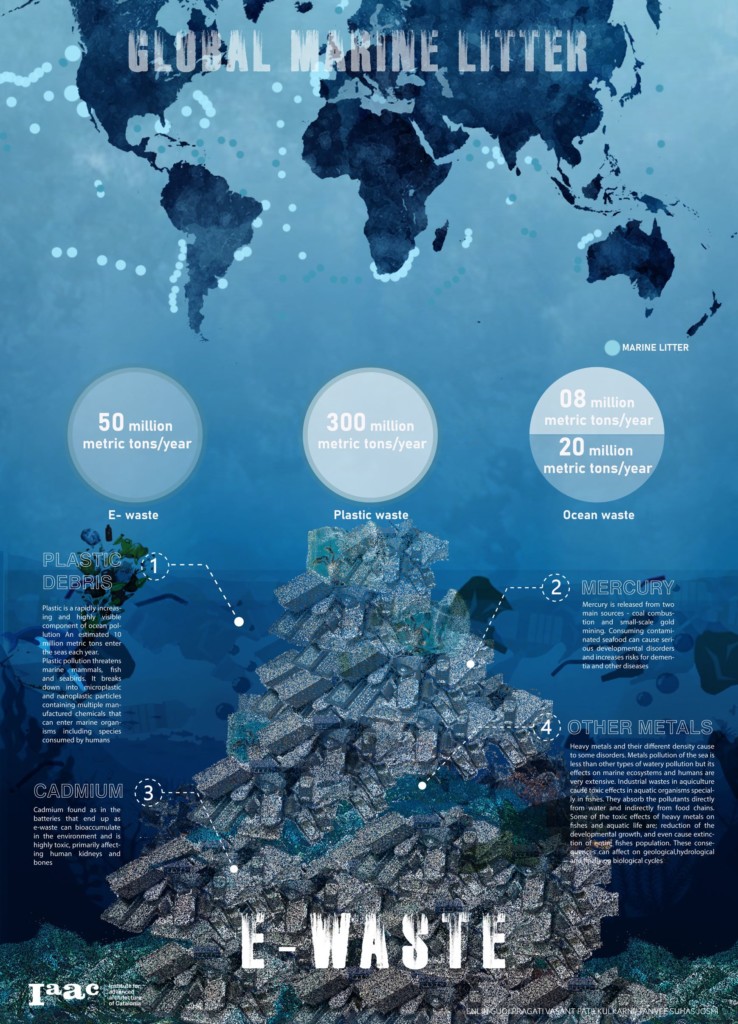The Oceanberg
An architects’ intervention to the future of marine environment
Project Brief:
Wastes dumped in the ocean become particularly harmful to both the environment and human health due to the toxic materials they contain.
The worst among them is the electronic waste, both for its rapidly increasing volume that came along with our ever expanding need for them as a part of our daily life and their exceptionally concentrated use of toxic heavy metals.
This project is a speculative proposal, designed under the futuristic scenario set by IAAC’s MAA 01 course, Speculative Landscape, to mediate and reverse the negative effect that are expected to occur in the real world’s next 50 years.
 E-waste landfill in Africa
E-waste landfill in Africa
Scenario: Global Marine Litter
Wastes dumped in the ocean become particularly harmful to both the environment and human health due to the toxic materials they contain.
The worst among them is the electronic waste, both for its rapidly increasing volume that came along with our ever expanding need for them as a part of our daily life and their exceptionally concentrated use of toxic heavy metals.
Annually, we produce 350 million tons of plastic waste around the world. 90% of those are not recycled, and among them 10% end up in the ocean.
150 million tonnes of plastics are currently in the oceans.
The Great Pacific Garbage Patch (GPGP) is the largest of the five offshore plastic accumulation zones in the world’s oceans, covering 1.6 million square kilometers.
The increasing level of e-waste among them makes such a large body of debris grow not just in size, but also in terms of their toxicity and equivalent carbon release.
Electronic wastes, which are rapidly taking up larger and larger proportion of the wastes we generate, are particularly harmful due to their complex, often toxic, components.
In 2019, the 53.6 million metric tonnes of global e-waste generation only had 9.29 million tons of them properly recycled. As an example, approximately 71 thousand tonnes of plastic containing the toxic brominated flame retardants came from the unrecycled e-waste in 2019. The unrecycled e-waste may also emit about 109.9 million tonnes equivalent of CO2 as they are improperly dumped in exposed condition, and 71 tonnes of mercury which can already be highly harmful as they are very likely to accumulate via the food chain, especially when exposed to aquatic conditions.

Intervention: The Oceanberg
By following the pattern of the ocean current, the Oceanberg will be gathering and containing the marine debris floating along the ocean current. By employing a large number of those gigantic vessels, we aim to contain the large bodies of ocean wastes in open sea water, effectively packaging the major bodies of those large garbage patches by the routes of ocean currents. Meanwhile, they also filter out the micro/nanoplastic particles floating invisibly in the seas. It will also filter through the harmful and valuable particles that flows the ocean along with the micro/nanoplastics, and store them for potential recycling.
General schematic:

Operational diagrams:



Finalized Panels:


Final words:
As a speculative project that aims to create a fictional vision of the viable future, we have combined the practice of architectural design and the necessity of considering the complicated corelation between different agents that forms the material world. In this project we created an architecture-sized automaton that is capable of working with its full body to carry out the clear task of repairing the damage we have done to the Earth. The project itself is most likely to remain forever a speculation on-paper; meanwhile, the ways of thinking involved in the process of its creation, namely the experiences in working with a vast field of different agents that requires consulting resources regarding various fields of expertise, should prove to be inspiring for developing contemporary architects’ way of thinking.
Credits:
The Oceanberg is a project of IAAC, the Institute for Advanced Architecture of Catalonia, developed during the Master in Advanced Architecture (MAA01) 2021/22 by students: Enlin Guo, Pragati Vasant Patilkulkarni, and Tanvee Joshi; Senior Faculty: Mireia Luzarraga.
